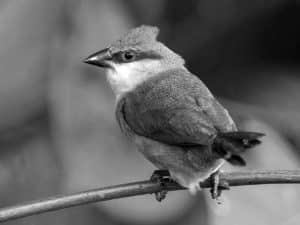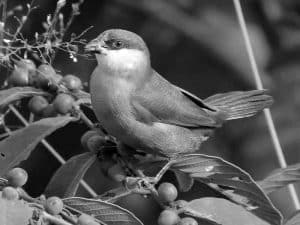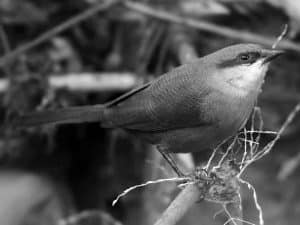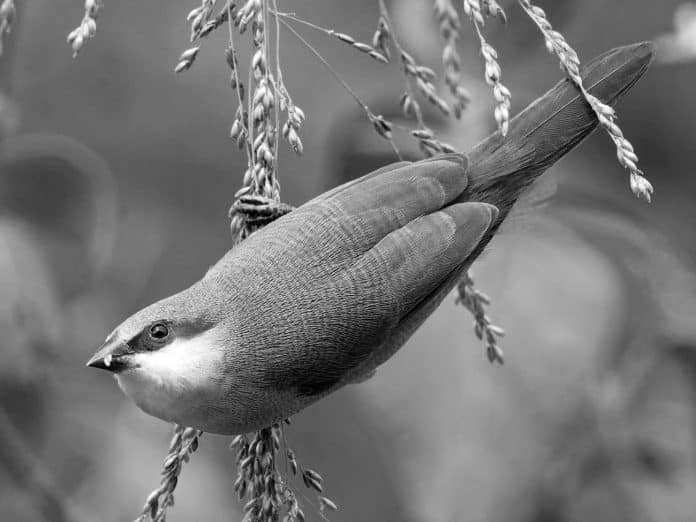Introduction to the Crimson-rumped Waxbill
Nestled within the vibrant tapestry of Tanzania’s diverse avian life, the Crimson-rumped Waxbill stands out as a true gem. This captivating crimson-rumped waxbill in Tanzania, with its striking plumage and engaging behaviors, has captured the hearts of birdwatchers and nature enthusiasts alike. As you delve into the world of the Crimson-rumped Waxbill, you’ll uncover a fascinating glimpse into the rich avian heritage of Tanzania.

The Crimson-rumped Waxbill, scientifically known as Estrilda rhodopyga, is a member of the Estrildidae family, a group of small, seed-eating finches found primarily in Africa. These delightful birds are known for their vibrant colors, melodious songs, and their intricate social dynamics. They are a true testament to the natural wonders that Tanzania has to offer.
Habitat and Distribution of the Crimson-rumped Waxbill in Tanzania
The Crimson-rumped Waxbill is a resident species found throughout Tanzania, with a wide distribution that spans the country’s diverse landscapes. These birds thrive in a variety of habitats, including:
- Grasslands and Savannas: The Crimson-rumped Waxbill is well-adapted to the open, grassy environments that are abundant in Tanzania. You can often spot them foraging in small flocks, hopping and flitting among the tall grasses.
- Woodland Edges and Scrublands: These birds also favor the transitional zones between woodlands and more open areas, taking advantage of the diverse sources of food and shelter.
- Agricultural Landscapes: Surprisingly, the Crimson-rumped Waxbill has also adapted to human-modified environments, such as farmlands and gardens, where they can find suitable nesting sites and food sources.
Throughout Tanzania, the Crimson-rumped Waxbill can be found in regions ranging from the coastal areas to the central highlands, making it a widespread and easily observed species for birdwatchers and nature enthusiasts.
Physical Characteristics and Behavior of the Crimson-rumped Waxbill
The Crimson-rumped Waxbill is a small, delicate-looking bird, with a typical length of around 10-11 centimeters. Its most striking feature is the vibrant crimson patch on its rump, which gives the species its common name. This bold splash of color contrasts beautifully with the bird’s overall grayish-brown plumage, creating a visually stunning appearance.
In addition to their eye-catching rump, Crimson-rumped Waxbills have a distinct black mask that extends from the bill to the eyes, and their beaks are small and conical, perfectly adapted for their seed-based diet. Their tails are relatively short, and their legs are small and delicate, allowing them to move with agility through the dense vegetation they inhabit.
These birds are highly social, often observed in small flocks that forage and move together in a synchronized manner. They exhibit a range of behaviors, including:
- Flitting and hopping among the grasses and shrubs in search of food
- Engaging in playful chasing and aerial displays, especially during the breeding season
- Producing a variety of melodious calls and songs, which they use to communicate with one another
- Preening and grooming their vibrant plumage, maintaining their stunning appearance
The Crimson-rumped Waxbill’s social nature and captivating behaviors make them a delight to observe, as they provide a glimpse into the intricate lives of Tanzania’s avian residents.
Diet and Feeding Habits of the Crimson-rumped Waxbill
As seed-eating finches, the Crimson-rumped Waxbill’s diet primarily consists of a variety of small seeds and grains. They forage in flocks, meticulously searching the ground and low vegetation for their preferred food sources, which include:
- Grass seeds
- Small millet and sorghum grains
- Weed seeds
- Cultivated cereal crops (in agricultural areas)
In addition to their seed-based diet, Crimson-rumped Waxbills may also supplement their nutrition with small insects and spiders, especially during the breeding season when they require additional protein for their young.
These birds are adept at finding and extracting seeds from their surroundings, using their small, conical beaks to crack open the tough seed casings. They often work together in their flocks, with individuals taking turns to keep a lookout while others forage, ensuring the group’s safety and efficiency.
The Crimson-rumped Waxbill’s reliance on a diverse array of seed sources allows them to thrive in a wide range of habitats across Tanzania, from natural grasslands to agricultural landscapes.
Breeding and Reproduction of the Crimson-rumped Waxbill

The Crimson-rumped Waxbill’s breeding season typically coincides with the onset of the rainy season in Tanzania, which can vary depending on the region. During this time, these birds engage in a series of courtship behaviors, including:
- Pair Formation: Crimson-rumped Waxbills form monogamous pairs, with the male and female working together to establish and defend a breeding territory.
- Nest Building: The pair collaborates to construct a domed, spherical nest, often using a variety of materials such as grass, leaves, and feathers. The nest is typically situated in dense vegetation, providing protection and concealment.
- Egg Laying and Incubation: The female Crimson-rumped Waxbill lays a clutch of 3-5 small, white eggs, which she then diligently incubates for approximately 12-14 days.
- Chick Rearing: Once the eggs hatch, both the male and female Crimson-rumped Waxbills share the responsibilities of feeding and caring for their offspring. The chicks are born helpless and rely on their parents for food and protection until they fledge, which occurs around 16-18 days after hatching.
After the breeding season, the Crimson-rumped Waxbills may continue to form small, family-based flocks, with the young birds gradually integrating into the larger social groups of the species.
Conservation Status and Threats to the Crimson-rumped Waxbill in Tanzania
The Crimson-rumped Waxbill is currently classified as a species of Least Concern on the IUCN Red List of Threatened Species. This designation indicates that the species is widespread and abundant, with a stable population trend.
However, like many other avian species, the Crimson-rumped Waxbill faces some potential threats to its long-term survival in Tanzania, including:
- Habitat Loss and Degradation: The conversion of natural grasslands and savannas into agricultural lands or human settlements can reduce the available habitat for Crimson-rumped Waxbills, potentially leading to population declines.
- Pesticide and Herbicide Use: The indiscriminate use of agricultural chemicals can negatively impact the Crimson-rumped Waxbill’s food sources, as well as the overall health of the ecosystem.
- Trapping for the Caged Bird Trade: Although not a major threat currently, the capture of Crimson-rumped Waxbills for the pet trade could potentially become a concern if not properly regulated.
Conservation efforts in Tanzania, such as the establishment of protected areas and the promotion of sustainable land-use practices, are crucial for ensuring the long-term survival of the Crimson-rumped Waxbill and other endemic avian species.
Birdwatching and Observing the Crimson-rumped Waxbill in Tanzania
For birdwatchers and nature enthusiasts visiting Tanzania, the Crimson-rumped Waxbill is a must-see species. These vibrant birds can be observed throughout the country, providing ample opportunities for both casual and dedicated birders to catch a glimpse of their captivating behaviors.
When exploring Tanzania’s diverse landscapes, keep an eye out for the Crimson-rumped Waxbill’s distinctive rump patch and lively movements within the grassy and shrubby habitats. Their social nature and tendency to forage in small flocks make them relatively easy to spot, even for those new to birdwatching.
Best Locations for Spotting the Crimson-rumped Waxbill in Tanzania
Some of the best locations to observe the Crimson-rumped Waxbill in Tanzania include:
- Serengeti National Park: This renowned wildlife haven is home to a diverse array of bird species, including the Crimson-rumped Waxbill, which can be found in the park’s grasslands and savanna habitats.
- Tarangire National Park: Known for its iconic baobab trees and diverse wildlife, Tarangire is also a prime location for spotting the Crimson-rumped Waxbill, particularly in the park’s more open, grassy areas.
- Arusha National Park: This compact park, located near the city of Arusha, offers excellent opportunities to observe the Crimson-rumped Waxbill, as well as other avian species that thrive in the park’s varied ecosystems.
- Lake Manyara National Park: The diverse habitats of Lake Manyara, including its grasslands and woodland edges, provide a suitable environment for the Crimson-rumped Waxbill.
- Mikumi National Park: This park, situated in the eastern part of Tanzania, is another destination where birdwatchers can hope to encounter the Crimson-rumped Waxbill.
As you explore Tanzania’s natural wonders, be sure to keep an eye out for the captivating Crimson-rumped Waxbill. With its vibrant plumage and engaging behaviors, this avian resident is a true delight to observe. Consider joining a guided birdwatching tour or downloading a bird identification app to enhance your chances of spotting this colorful species during your travels.
Tips for Photographing the Crimson-rumped Waxbill in Tanzania

Capturing the beauty of the Crimson-rumped Waxbill through photography can be a rewarding experience for nature enthusiasts. Here are some tips to help you photograph this elusive bird:
- Patience and Stealth: Crimson-rumped Waxbills are small and agile, so approach them slowly and quietly to avoid startling them.
- Use Appropriate Gear: A telephoto lens or a camera with a powerful zoom function will help you capture detailed, close-up shots of the Crimson-rumped Waxbill.
- Timing and Lighting: Early morning and late afternoon are often the best times to photograph these birds, as the lighting is softer and more flattering.
- Anticipate their Movements: Observe the Crimson-rumped Waxbill’s behavior and try to predict where it might perch or land, so you can be ready with your camera.
- Blend In with the Environment: Wear neutral-colored clothing and consider using a camouflage blind or hide to minimize your presence and increase your chances of capturing stunning shots.
With a bit of patience, the right equipment, and an eye for timing, you can immortalize the vibrant beauty of the Crimson-rumped Waxbill in your photographic collection.
Conclusion: Appreciating the Beauty of the Crimson-rumped Waxbill in Tanzania
The Crimson-rumped Waxbill is a true gem of Tanzania’s avian landscape, captivating birdwatchers and nature enthusiasts with its vibrant plumage and engaging behaviors. As you explore the diverse habitats of this East African nation, keep an eye out for these delightful birds, and take the time to appreciate the natural wonders they represent.
Whether you’re a seasoned birder or a casual nature lover, the Crimson-rumped Waxbill offers a unique opportunity to connect with the rich biodiversity of Tanzania. By learning about this species and its role within the local ecosystem, you can deepen your understanding and appreciation of the country’s remarkable avian heritage.
So, the next time you visit Tanzania, be sure to add the Crimson-rumped Waxbill to your list of must-see species. With a little luck and a keen eye, you might just be rewarded with a glimpse of this vibrant and captivating bird, leaving you with lasting memories of your encounter with Tanzania’s colorful avian resident.

































